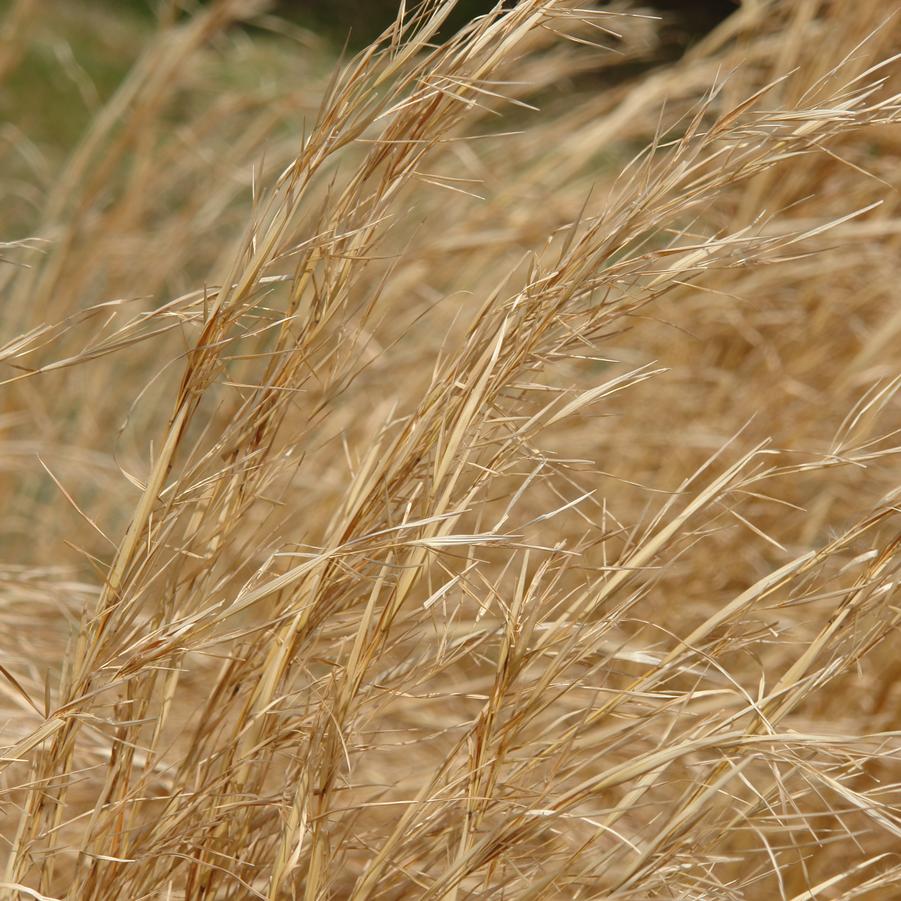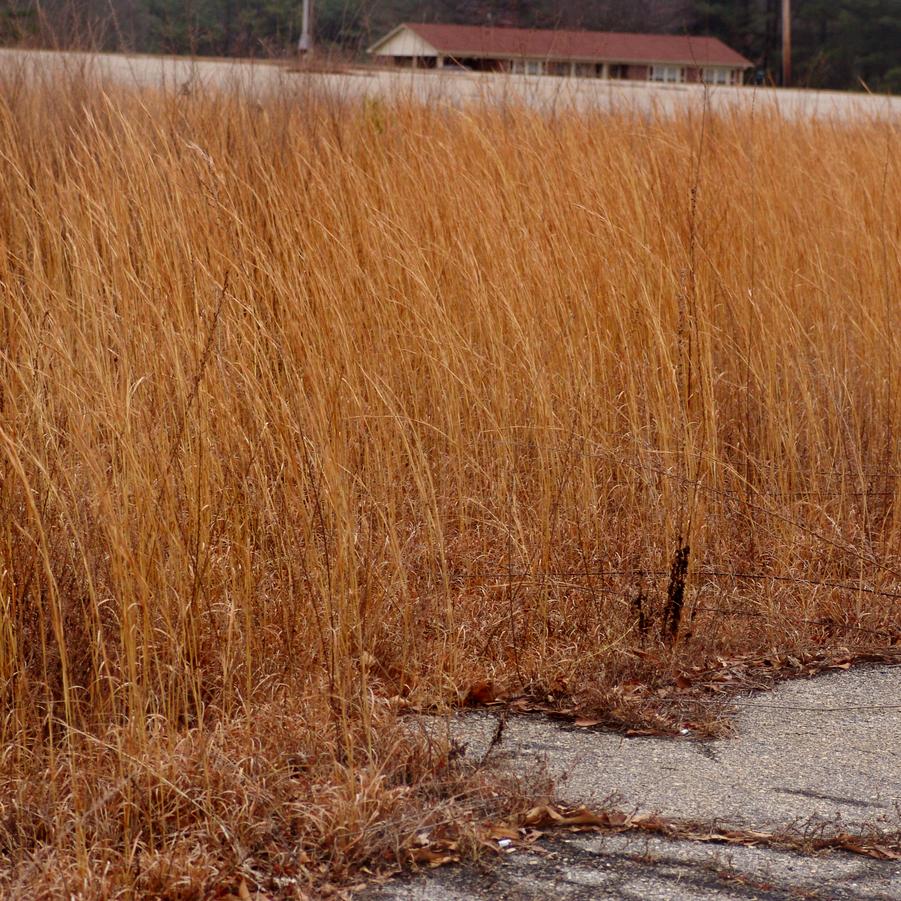





Plant Calculator
Enter the approximate length and width of the area you will be planting and click 'Calculate' to determine how many Andropogon virginicus you will need.
Correct and successful spacing is complex and depends on project conditions. We encourage you to call us at 877-ECO-PLUG for project specific recommendations and further assistance.
Andropogon virginicus
broomsedge
- Category: Grass, Native
- Hardiness Zone: 5-8
- Height: 2-3 Feet
- Spread: 1-2 Feet
- Spacing: 18 Inches
- Bloom Color: Violet
An easy-to-grow, clump-forming, native warm season grass with incredible golden copper fall color. A pioneer soil stabilizing plant that does well in poor, infertile areas and surprisingly well in floodplains. It's wonderful for xeriscaping and restoration projects, or in coastal areas. The attractive fall and winter stems make a unique addition to cut flower arrangements!
Click here to download technical information for growers:
Exposure
| • | Full Sun |
Wetland Indicator Status
| • | Falcutative Upland (FACU) |
Plug Type
| • | Landscape Plug™ |
Season of Interest (Flowering)
| • | Summer |
Propagation Type
| • | Open pollinated |
Grass Type
| • | Warm Season |
Additional Information about Andropogon virginicus
Andropogon virginicus is a clump-forming, warm season grass with incredible golden copper fall color. Its straw-like foliage persists throughout the winter in our region, providing interest even against a snowy backdrop. It has a fibrous root system and reproduces mainly from wind-pollinated seed.
Found in a variety of open habitats in eastern North America including prairies, pasturelands and even open woodlands. It is often a pioneer plant in disturbed sites.
While we've seen this incredible plant thrive in poor, xeric soils of meadows, stormwater systems with engineered sand-based soils, and roadside plantings exposed to salt runoff - it also tolerates more mesic conditions in our trial gardens. This is a great plant to consider for tough xeric, full sun sites such as meadows, restoration projects, or coastal plantings. Because Andropogon virginicus reseeds, it can maintain its place in landscapes that are prone to disturbance or other challenging conditions.
A range of native insects feed on Andropogon virginicus foliage, including Skipper larvae, leafhoppers and leaf beetles. Its persistent foliage lasts through the winter which provides shelter and nesting habitat for birds who also eat its seed.
Growing & Maintenance Tips for Andropogon virginicus
Propagate by seed or divide clumps every few years. Cut stems down to the ground in late winter (February or March) before new growth occurs.
